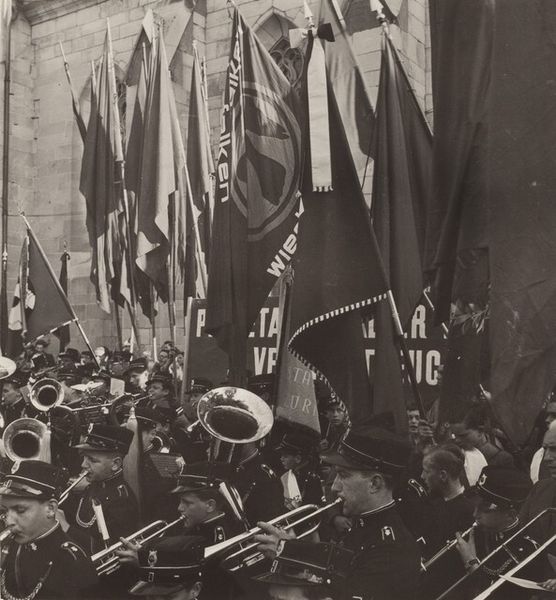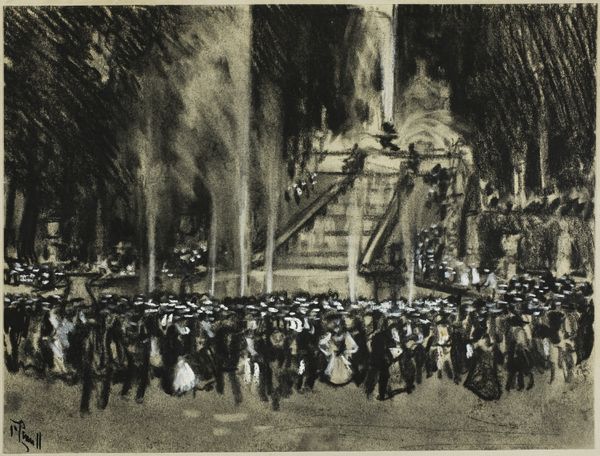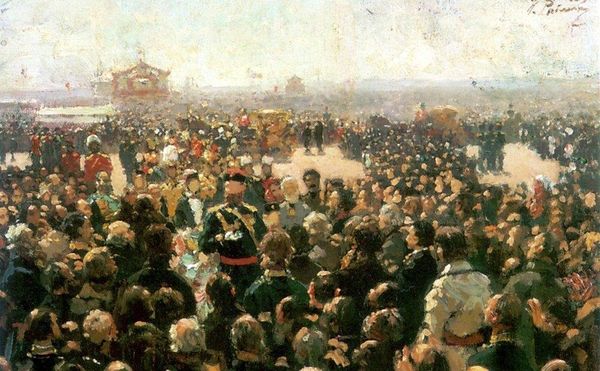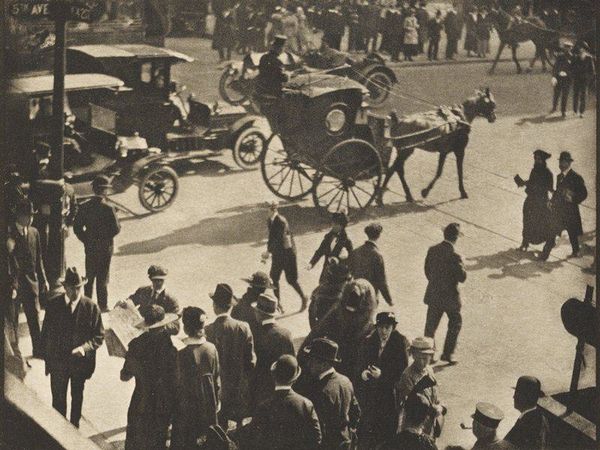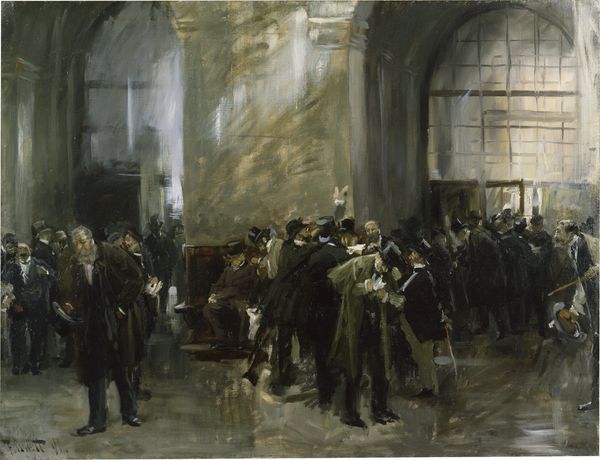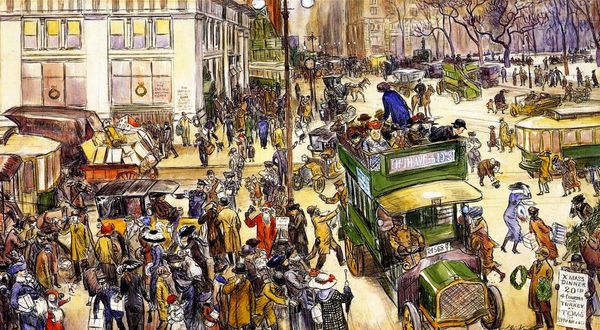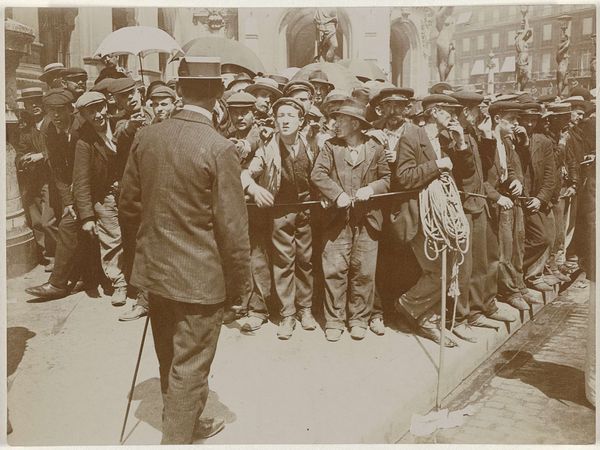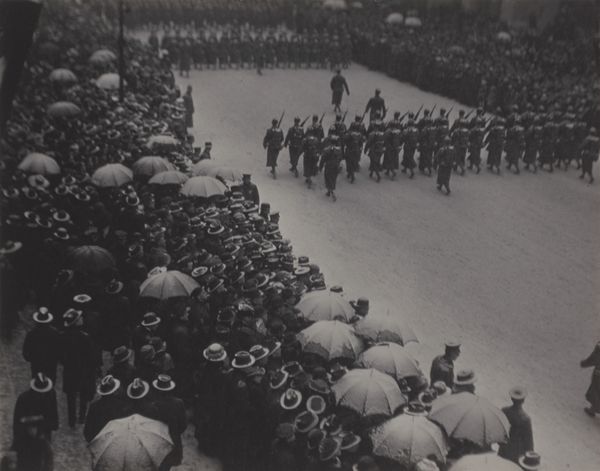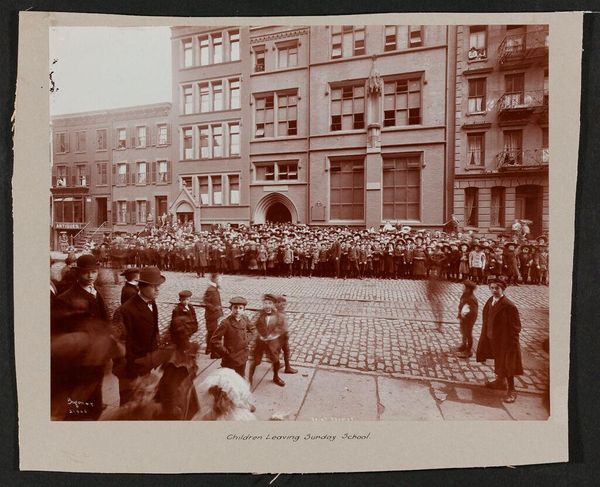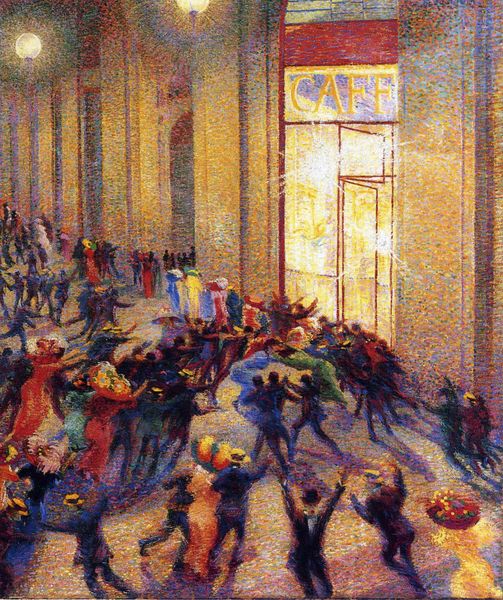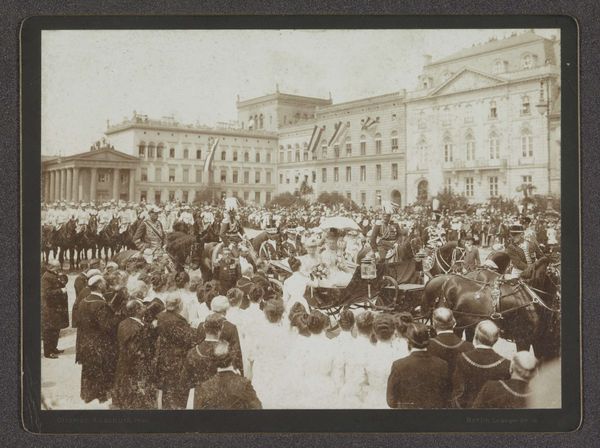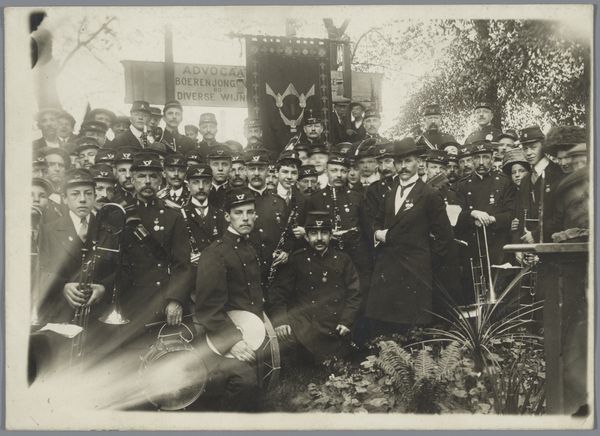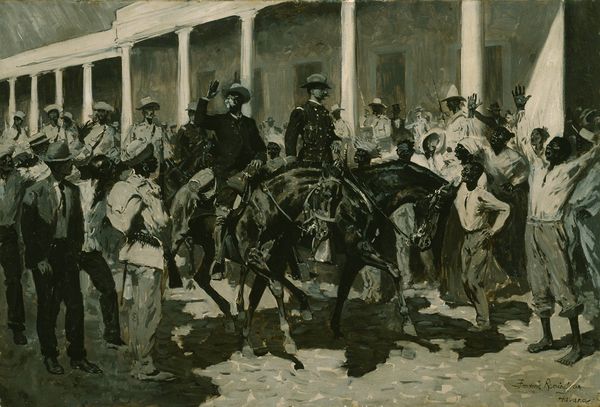
The Corpus Christi Procession Leaving The Church Of Santa Maria Del Mar 1896 - 1898
0:00
0:00
Copyright: Public Domain: Artvee
Editor: This is "The Corpus Christi Procession Leaving The Church Of Santa Maria Del Mar," painted by Ramón Casas between 1896 and 1898. The crowd scene feels so immediate, but also, the individuals are kind of lost within the broader spectacle of the procession. What stands out to you about this piece? Curator: For me, it's the layering of labor, both visible and invisible. We see the direct labor in the crafting of the procession itself—the banners, the costumes, the construction of that visual spectacle. But consider the invisible labor as well—the social structures and hierarchies that dictate who participates and in what capacity. The balconies with their colorful fabrics highlight class division as well, and those are material creations that cost resources and human effort to build and put in place. Editor: That’s a great point. I was just focused on the artistic impression of the crowd, but you are directing my attention to the socioeconomic stratification evidenced in the piece. The division is really interesting. It’s almost as if the labor on the street performs for the viewing pleasure of a more affluent audience looking on. Curator: Exactly. And this Impressionistic style itself, with its quick brushstrokes and capture of fleeting moments, can be seen as a product of its time—a rapidly industrializing society. What materials are consumed, how space is utilized, and who does it all impact? That’s what the materiality reveals here. It gives form to this snapshot of turn-of-the-century Barcelona. Editor: I never really thought about Impressionism that way, as connected to the materials of urban life. It's cool how the scene depicted and the *way* it's depicted, both speak to social structure. Curator: Indeed. Looking closely at the labor and materials of art – what it’s *made* of, both literally and figuratively– reveals its profound engagement with its time.
Comments
No comments
Be the first to comment and join the conversation on the ultimate creative platform.
